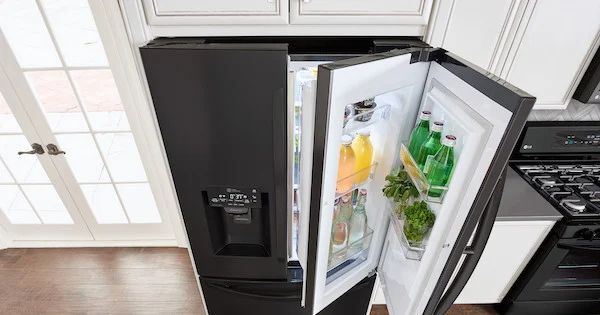Door-in-Door refrigerators have become increasingly popular in modern kitchens due to their innovative design and convenient features. With a distinct compartment accessible from the exterior, these refrigerators offer unique advantages.
In this article, we will explore the important factors to consider when evaluating the pros and cons of door-in-door refrigerators, helping you make an informed decision for your kitchen.
Table of Contents
Pros of Door-in-Door Refrigerators
Enhanced Accessibility
The primary advantage of a door-in-door refrigerator is its convenient access to frequently used items. The exterior compartment allows you to quickly grab commonly accessed beverages, condiments, or snacks without opening the entire refrigerator, minimizing temperature fluctuations and reducing energy consumption.
Improved Organization
Door-in-Door refrigerators often feature additional storage compartments and adjustable shelves, providing better organization options for different types of food items. This feature allows you to segregate and access items more efficiently, keeping your refrigerator neatly organized.
Energy Efficiency
By reducing the amount of time the main refrigerator door remains open, door-in-door models help conserve energy. The ability to access frequently used items without opening the full refrigerator helps maintain a more stable temperature inside, resulting in reduced energy consumption and potential cost savings over time.
Temperature and Humidity Control
Some door-in-door models feature specialized compartments with independent temperature and humidity controls. This allows you to create optimal conditions for specific food items, such as storing fruits and vegetables at different humidity levels or maintaining a lower temperature for dairy products.
Cons of Door-in-Door Refrigerators
Reduced Storage Capacity
One of the main trade-offs with door-in-door refrigerators is the compromised storage capacity. The additional exterior compartment occupies space that could otherwise be used for storage. While this may not be a significant concern for smaller households, larger families or those who require ample storage space may find it limiting.
Higher Price Point
Door-in-Door refrigerators often come with advanced features, technology, and a sleek design, making them more expensive compared to traditional models. The added convenience and functionality of the door-in-door design contribute to the higher price tag. It’s essential to consider your budget and prioritize the benefits when making a purchasing decision.
Limited Placement Flexibility
The unique design of door-in-door refrigerators can limit placement options in your kitchen. The additional clearance required for the door-in-door functionality may impact the surrounding cabinetry or kitchen layout, making it important to ensure proper measurements and suitability before purchasing.
Potential for Door Misuse
While the exterior compartment provides convenience, there is a possibility of leaving it open unintentionally, resulting in temperature fluctuations and wasted energy. It requires conscious effort to ensure that the door is properly closed after use to avoid any negative impact on food storage and energy efficiency.
Pros and Cons of Door-in-Door Refrigerators
| Pros | Cons |
|---|---|
| Enhanced Accessibility | Reduced Storage Capacity |
| Improved Organization | Higher Price Point |
| Energy Efficiency | Limited Placement Flexibility |
| Temperature and Humidity Control | Potential for Door Misuse |
Conclusion
Door-in-Door refrigerators offer convenient access to frequently used items, improved organization, and energy-saving benefits. However, it’s important to consider the trade-offs, including reduced storage capacity, a higher price point, limited placement flexibility, and the potential for door misuse. Assess your kitchen needs, budget, and lifestyle to determine whether a door-in-door refrigerator aligns with your requirements.
By carefully evaluating the pros and cons, you can make an informed decision and choose a refrigerator that enhances the functionality and convenience of your kitchen.

